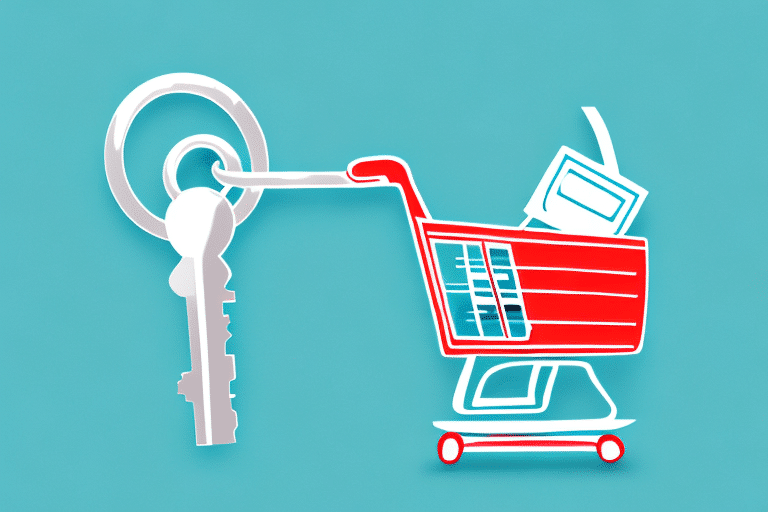Unlocking the Power of Abandoned Cart Journey Marketing Cloud
Abandoned cart journey marketing cloud is a powerful tool for e-commerce businesses aiming to boost sales and improve conversion rates. In this article, we'll delve into the fundamentals of abandoned cart journey marketing cloud, explore its significance for e-commerce, and provide a comprehensive guide to setting up successful campaigns. We'll also discuss best practices for designing high-converting abandoned cart journeys, analyzing and optimizing metrics, leveraging personalization, utilizing social media and retargeting ads, measuring ROI, and avoiding common pitfalls. Finally, we'll examine future trends and predictions for abandoned cart journey marketing cloud. Get ready to harness the full potential of this essential e-commerce strategy!
Why Abandoned Cart Journey Marketing Matters for E-commerce
Recovering Lost Sales
Abandoned cart journey marketing cloud involves sending targeted marketing messages to shoppers who have left items in their online shopping carts. This strategy is crucial for e-commerce businesses, as it helps recover lost sales and increase revenue. According to BarcodesInc, the average cart abandonment rate is approximately 70%, meaning that out of 10 shoppers who add items to their carts, only 3 complete the purchase. Effective abandoned cart strategies can significantly reduce this loss.
Enhancing Personalization
One of the standout benefits of abandoned cart journey marketing cloud is the ability to personalize marketing messages for each individual shopper. By analyzing the specific items left in the cart, businesses can craft targeted messages that highlight the benefits of those products and offer tailored incentives to encourage completion of the purchase. Personalized approaches have been shown to increase conversion rates by up to 30% [Forbes].
Gaining Insights into Customer Behavior
Beyond recovering sales, abandoned cart journey marketing cloud provides valuable insights into customer behavior. By tracking frequently abandoned items, businesses can identify patterns and address underlying issues, such as high shipping costs or complicated checkout processes. For instance, if data reveals that customers often abandon carts due to shipping fees, implementing free shipping promotions can effectively reduce abandonment rates.
Setting Up an Effective Abandoned Cart Campaign
Identifying Target Audience and Pain Points
The first step in creating a successful abandoned cart campaign is to identify the target audience and understand their pain points. This involves analyzing customer data to determine common reasons for cart abandonment, such as unexpected costs, lack of trust, or complicated navigation.
Creating Compelling Offers and Incentives
To entice shoppers to return and complete their purchases, businesses should develop compelling offers. These incentives can include discounts, free shipping, or exclusive promotions. For example, offering a 10% discount on the abandoned items can motivate customers to finalize their transactions.
Implementing Multi-Touchpoint Strategies
An effective abandoned cart journey utilizes multiple touchpoints to engage customers. This includes sending follow-up emails, SMS notifications, push alerts, and targeted social media ads. Utilizing automation tools ensures timely and consistent communication without manual intervention.
Best Practices for High-Converting Journeys
Leveraging Personalization Techniques
Personalization is key to increasing the effectiveness of abandoned cart campaigns. Using dynamic content that addresses customers by name and references the specific items they abandoned can make messages more relevant and engaging.
Optimizing Timing and Automation
The timing of abandoned cart messages is critical. Sending a reminder email within an hour of cart abandonment can capture the customer's attention while the interest is still high. Subsequent follow-ups can be scheduled at strategic intervals to reinforce the message without overwhelming the customer.
Offering Incentives and Creating Urgency
Incentives like discounts or free shipping can encourage customers to return. Additionally, creating a sense of urgency by highlighting limited-time offers can prompt quicker decision-making. For example, stating that a discount expires in 24 hours can motivate immediate action.
Utilizing Tools and Strategies
Integrating Social Media
Social media platforms like Facebook and Instagram offer robust targeting options for abandoned cart recovery. By running personalized ads that showcase the abandoned products, businesses can re-engage customers where they spend a significant amount of their time online.
Implementing Retargeting Ads
Retargeting ads serve as a reminder to customers who have previously visited the website but did not complete a purchase. Utilizing cookies and tracking pixels allows businesses to display tailored ads across various websites and platforms, keeping the brand top-of-mind and encouraging return visits.
Analyzing and Optimizing Metrics
Continuous analysis of key metrics such as open rates, click-through rates, and conversion rates is essential for optimizing abandoned cart campaigns. Tools like Google Analytics and specialized marketing platforms can provide insights into campaign performance, enabling data-driven adjustments for better results.
Avoiding Common Pitfalls and Embracing Future Trends
Common Mistakes to Avoid
Several common mistakes can hinder the success of abandoned cart campaigns. These include sending too many messages, lacking personalization, failing to create urgency, and not testing different campaign elements. It's crucial to strike a balance in communication frequency and ensure that each message adds value to the customer experience.
Future Trends and Predictions
The landscape of abandoned cart journey marketing cloud is evolving with advancements in automation and artificial intelligence. Future trends indicate a greater emphasis on hyper-personalization, predictive analytics to anticipate customer behavior, and the integration of augmented reality to enhance the shopping experience. Staying abreast of these trends will enable businesses to maintain a competitive edge in e-commerce.
Measuring the ROI of Your Abandoned Cart Journey Marketing Efforts
Evaluating the return on investment (ROI) of abandoned cart campaigns is vital for understanding their effectiveness. Key metrics to track include revenue generated from recovered carts, cost per acquisition, and overall conversion rates. By calculating the ROI, businesses can assess the financial impact of their strategies and make informed decisions on future marketing budgets.
For instance, if an abandoned cart campaign costs $500 and generates $5,000 in recovered sales, the ROI would be 900%. Tools like Google Analytics can assist in tracking these metrics accurately.
Conclusion
Abandoned cart journey marketing cloud is an indispensable strategy for e-commerce businesses seeking to maximize sales and enhance customer engagement. By implementing personalized, timely, and strategic campaigns, businesses can effectively recover lost sales and gain deeper insights into customer behavior. Adhering to best practices, utilizing advanced tools, and staying informed about emerging trends will ensure sustained success in an increasingly competitive online marketplace.




















